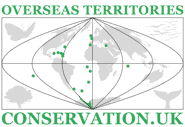Blue Vervain to Blue Iguana Education Materials
Part of Blue Vervain to Blue Iguana project involved the design and publication of materials outlining traditional uses of plants on Montserrat including for medicinal purposes.
Children’s activity book
Montserrat’s flora has developed over centuries, mainly due to natural dispersion and the movement of people from one place to the next. As a result, scientists (geographers, botanists and archaeologists) have attempted to provide an insight into the origins of some plants and their uses, for centuries. Some plants (or ‘bush’ as they are called by the local population), although considered to be invasive, have played an important role in the healing and cultural practices of the people of Montserrat, for generations. However, reliable sources of information about this aspect of Montserrat’s cultural history are dwindling, as the elders age.
To push these memories forward two or even three generations, the Montserrat National Trust, in collaboration with project partners and the local Hidden Histories Committee designed a project to gather information about fifteen common plant species that are used locally for medicinal purposes. The research was carried out by five young cadets, who were recruited by the Montserrat National Trust.
The youngsters were provided with training on how to interview elders, and how to record their responses both digitally and in note form. They worked collaboratively with the local Hidden Histories Committee to contribute to the creation of the Activity Booklet and Information book (see below).
Click on the arrows to preview some of the pages.
The booklet was published in December 2022 some example pages are found here.
Adults information book
When collecting information for the booklets, the cadet met with eight elders, and the information obtained from interviews was collated in a table that allowed the groups to assess common findings and any differences in the uses. The learning impacts for the young people involved in this project went beyond developing skills in interacting with their subjects and recording answers to their research questions.
They took the process further and researched primary and secondary documents, spoke to their grandparents and other seniors in the community, and became familiar with the locations of several medicinal plants on the island. This gave them a connection to their heritage. These included plants brought to the island first by the Taino-Kalinago peoples, then those brought by settlers, colonisers and enslaved Africans, all of whom brought not only new seeds and plants but their own cultural traditions.
Browse some of the pages of the booklet here.
